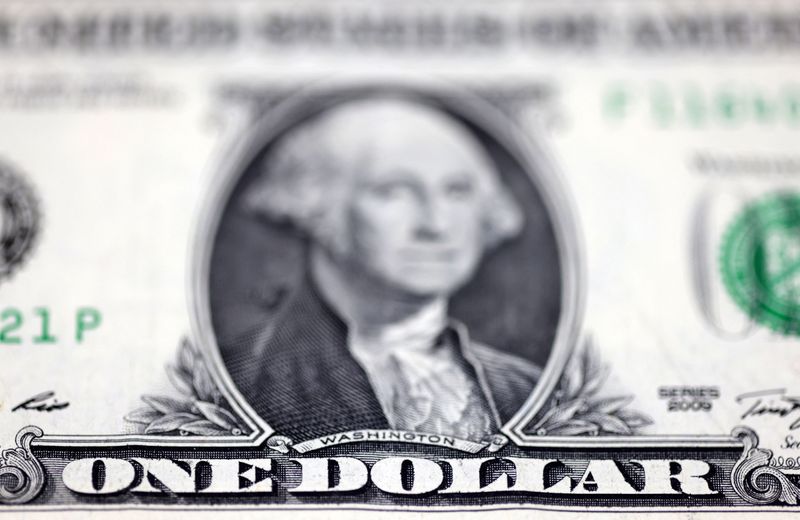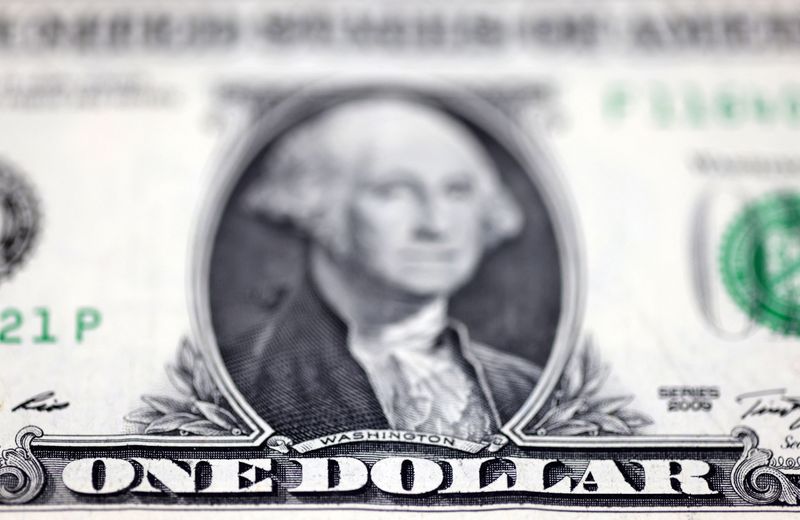Forex
Dollar dips, China boosts global growth hopes


© Reuters. FILE PHOTO: U.S. Dollar banknote is seen in this illustration taken July 17, 2022. REUTERS/Dado Ruvic/Illustration/File Photo
By Karen Brettell
NEW YORK (Reuters) -The U.S. dollar weakened on Tuesday after China cut interest rates in a bid to prop up its struggling property market, raising hopes of additional stimulus that would boost global growth.
The yen gained, meanwhile, but stayed below the 150.88 per dollar level reached last Monday, its weakest in 11 weeks, as investors focus on whether renewed weakness in the Japanese currency is likely to prompt intervention by the Bank of Japan and Ministry of Finance.
China cut the five-year loan prime rate (LPR) by 25 basis points, which was the largest since the reference rate was introduced in 2019 and far more than analysts had expected.
“The thinking is if China hits the gas pedal then global growth will pick up. Then you start to see dollar selling and money going into emerging markets on the back of that,” said Adam Button, chief currency analyst at ForexLive in Toronto.
Bloomberg News on Sunday quoted Chinese Premier Li Qiang calling for “pragmatic and forceful” action to increase China’s confidence in the economy.
The Australian dollar, which is seen as a proxy for global growth, rose 0.20% to $0.6550, after earlier reaching $0.6579, the highest since Feb. 2.
In the offshore market, the yuan strengthened as far as 7.1963 per dollar, the strongest since Feb. 7.
Investors are also brushing off higher than expected U.S. consumer and producer price inflation data for January released last week as likely being impacted by seasonal adjustments and not indicating renewed price pressures. That would leave the Federal Reserve on track to begin cutting interest rates in the coming months.
“There’s a lingering feeling that the CPI numbers were more of a seasonal adjustment story than a resurgence in inflation story,” Button said. “If central banks wait until inflation is dead and buried then we might end up in a situation where risk assets struggle and global growth is crippled.”
The Fed on Wednesday will release minutes from its Jan. 30 to 31 meeting, which will be evaluated for any new clues on when the U.S. central bank is likely to begin cutting rates.
The was last down 0.21% at 104.08, and earlier reached 103.79, the lowest since Feb. 2. The euro rose 0.25% to $1.0804 and got as high as $1.0839, the highest since Feb. 2.
The greenback fell 0.05% to 150.04 Japanese yen, after earlier trading at 150.45.
The yen has lost 7% in value in 2024 alone, having weakened past the 150-level against the dollar on Feb. 13. In the past, traders have viewed 150 as a line in the sand for the Bank of Japan and the Ministry of Finance that could trigger intervention, as was the case in late 2022.
This time around, the move has been more gradual and volatility has been modest, which suggests little immediate nervousness from either Japanese authorities or currency traders.
Japanese finance minister Shunichi Suzuki said on Tuesday authorities were “closely watching FX moves with a high sense of urgency”, a phrase he has used previously, and stated the yen exchange rate was set by a number of factors.
Sterling gained after Bank of England Governor Andrew Bailey said on Tuesday he was comfortable with investors betting on interest rate cuts this year but pointed to signs that Britain’s economy was picking up after falling into recession in late 2023.
It was last up 0.20% at $1.2618 and earlier rose to $1.2668, the highest since Feb. 13.
The greenback gained 0.24% against the Canadian dollar to $1.3523 loonies.
Data on Tuesday showed that Canada’s annual inflation rate slowed significantly more than expected to 2.9% in January and core price measures also eased, bringing forward bets for an early interest rate cut.
In cryptocurrencies, bitcoin rose 0.33% to $52,076.

 Forex3 years ago
Forex3 years agoForex Today: the dollar is gaining strength amid gloomy sentiment at the start of the Fed’s week

 Forex3 years ago
Forex3 years agoUnbiased review of Pocket Option broker

 Forex3 years ago
Forex3 years agoDollar to pound sterling exchange rate today: Pound plummeted to its lowest since 1985

 Forex3 years ago
Forex3 years agoHow is the Australian dollar doing today?

 Cryptocurrency3 years ago
Cryptocurrency3 years agoWhat happened in the crypto market – current events today

 World3 years ago
World3 years agoWhy are modern video games an art form?

 Commodities3 years ago
Commodities3 years agoCopper continues to fall in price on expectations of lower demand in China

 Economy3 years ago
Economy3 years agoCrude oil tankers double in price due to EU anti-Russian sanctions





















